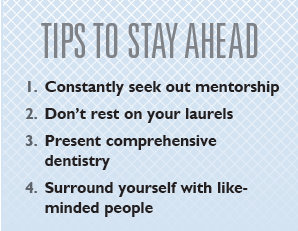
Recently, as I was reflecting on my high school days, I was surprised at how many times in those early years my experiences taught me to look beyond expectations and find a better way. Reminiscing about those formative years affirmed my long-held belief that it’s important to look at the world differently, or else you risk being just one of the crowd, waiting for something better to come along.
One of my fondest memories was spending a week at California Boys State, a yearly event where high school boys were selected for leadership training—particularly in the field of local and state government. The event was held at the fairgrounds in Sacramento, and a large cow barn filled with bunk beds was where attendees slept. The boys would spend the day learning about city organization, playing sports, engaging in various social activities, and waiting in long lines at the cafeteria. This event was especially exciting for a young man like me who had grown up in the desert oil town of Taft, California.
One of the activities I enjoyed most was playing tetherball. I spent every free moment challenging anyone else who was up for a game. The only thing that could tear me away from this activity was the need to eat. Waiting in the long lines for food was the only aspect of camp that wasn’t fun.
One day when I was playing tetherball, I sprained my ankle—badly. The injury required me to use crutches. At first, I thought that hobbling around on crutches would be the end of my summertime fun, but I discovered that being on crutches had a great advantage: I could go to the front of the line for each meal. With my crutches, I was able to take two friends to the front of the line, too.
I didn’t realize it at the time, but the experience became a powerful lesson. No, the lesson was not about how to leverage injuries to get ahead, but rather it was about the many advantages of being at the front of the line.

Making Strides
It isn’t a stretch to draw a comparison between dentistry and that cafeteria at Boys State. The dental community is much larger today than when I started out. Today, it seems as though a great many dentists are stuck waiting in line, hoping that someday they will arrive at a place where they can get what they went into dentistry for.
The sad truth is that waiting for something to happen is never the best way to get ahead. As dentists, we should be constantly looking for ways to move ahead, and sometimes the very thing that propels us to the front of the line comes as a result of misfortune or difficulty.
When I first started practicing dentistry, I had graduated from dental school and gotten “in line” with the other new dentists. I hoped to someday have the opportunity to build a practice that would allow me to make a difference and provide the lifestyle I wanted. But being in the back of the line gives you a lousy view—it is difficult to accurately gauge your progress and see what is happening up front.
As a young dentist, I quickly became disheartened because my patients didn’t seem to want the type of dentistry that I could provide. Case presentation after case presentation ended with a patient saying “no,” and each time, it felt as though my place in line was moving farther towards the back.
After a few years, I decided to find a set of professional crutches in the form of a mentor. That mentor turned out to be Dr. L. D. Pankey and with his wisdom and insight, I started moving in the right direction. He taught me about the value of dentistry.
On my way to the front of the line, I discovered what had been holding me back. I had to want to become more than “just another dentist.” The only thing I ever aspired to in my life was to be a dentist—and I wanted to be the very best dentist that I could. I had to stop focusing on what every other dentist was doing, and look at what would differentiate my practice.
I decided not to accept the conventional wisdom that every patient will need their teeth removed and replaced with a denture. I believed that dentistry had the power to help patients keep their teeth for their lifetime. I based my professional approach on that philosophy, and my patients responded—and my practice, by the way, was in a small community in California that was “blue collar” at best.
I didn’t magically become an expert salesman. Quite the contrary! By freeing myself from the groupthink and the limited view of dentistry’s potential, I was able to speak to patients in terms of a higher level of care. I learned to speak with authority and to communicate dentistry’s value.
This approach changed my life and my practice. In a short time, I had a new view of dentistry, unobstructed by the assumptions of those who had been in front of me. I now had a clear view of what was possible. I made a daily goal to stay at the front of the line.

Staying at the Front of the Line
Make a commitment to stay at the front of the line. Here are some tips to get you there:
1. Constantly seek out mentorship. Dentistry is a commitment to lifelong learning. All dentists should implement iterative improvements and always be looking for new techniques and better ways of doing things. Learn to practice the best dentistry possible, and don’t assume that patients can’t afford it.
2. Dispel the notion that you can rest on your laurels. If dentists don’t actively work to stay at the forefront of their profession (the front of the line), they’ll quickly be overtaken by the crowd that says, “My patients can’t afford it!”
3. Present comprehensive dentistry. Dentists should present comprehensively to all patients, regardless of preconceived notions about their patients’ desires or their ability to pay. They should keep their skills up to date so they can provide treatment options that deliver outcomes above and beyond the norm.
4. Surround yourself with like-minded people. Dentists should engage with colleagues who also want to be at the front of the line. Those dentists will drive you to be the best you can be—and the same philosophy applies to business partners, suppliers, and, of course, your dental lab. Learn from those who have learned to become “the best and most productive!”
Once I made it to the front of the line, I never looked back. The kind of dentistry that I provided took me to the front of the line, and my patients have been grateful and happy that they still have their teeth—40 years later.









